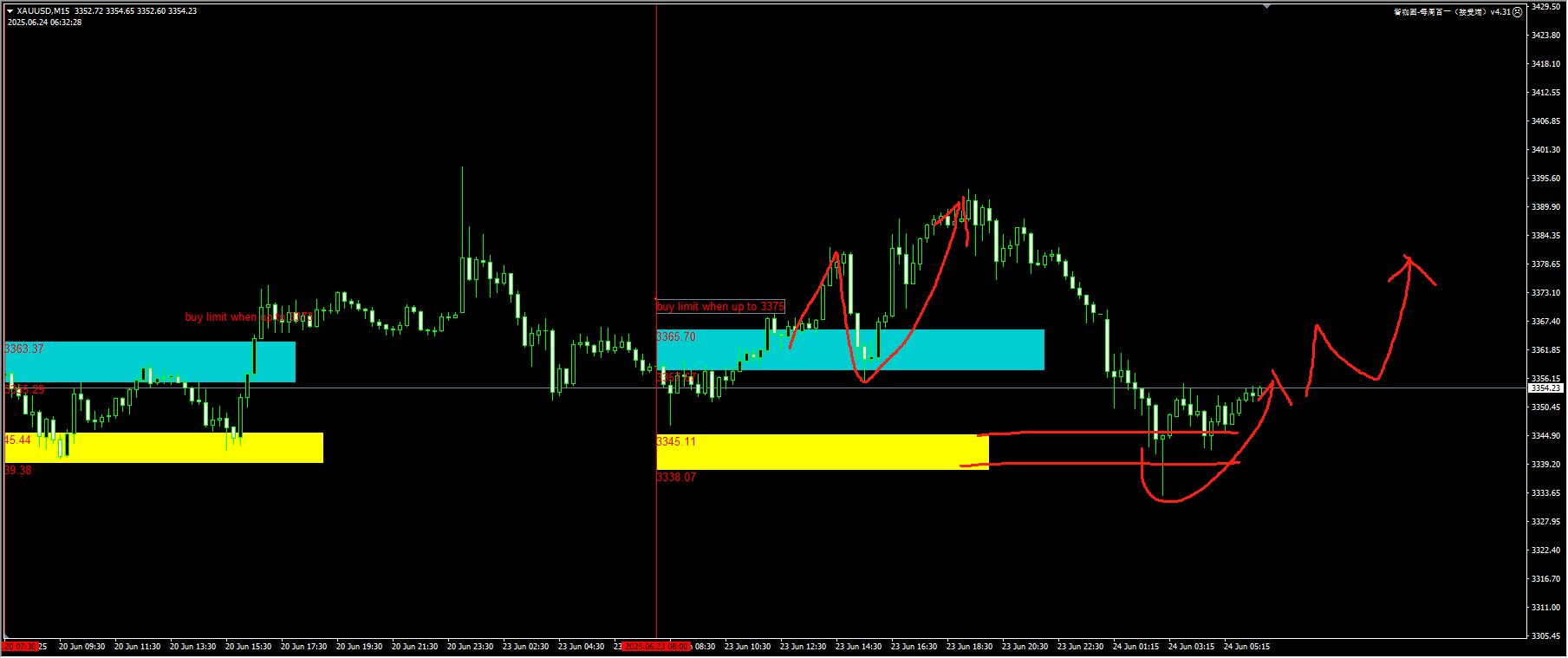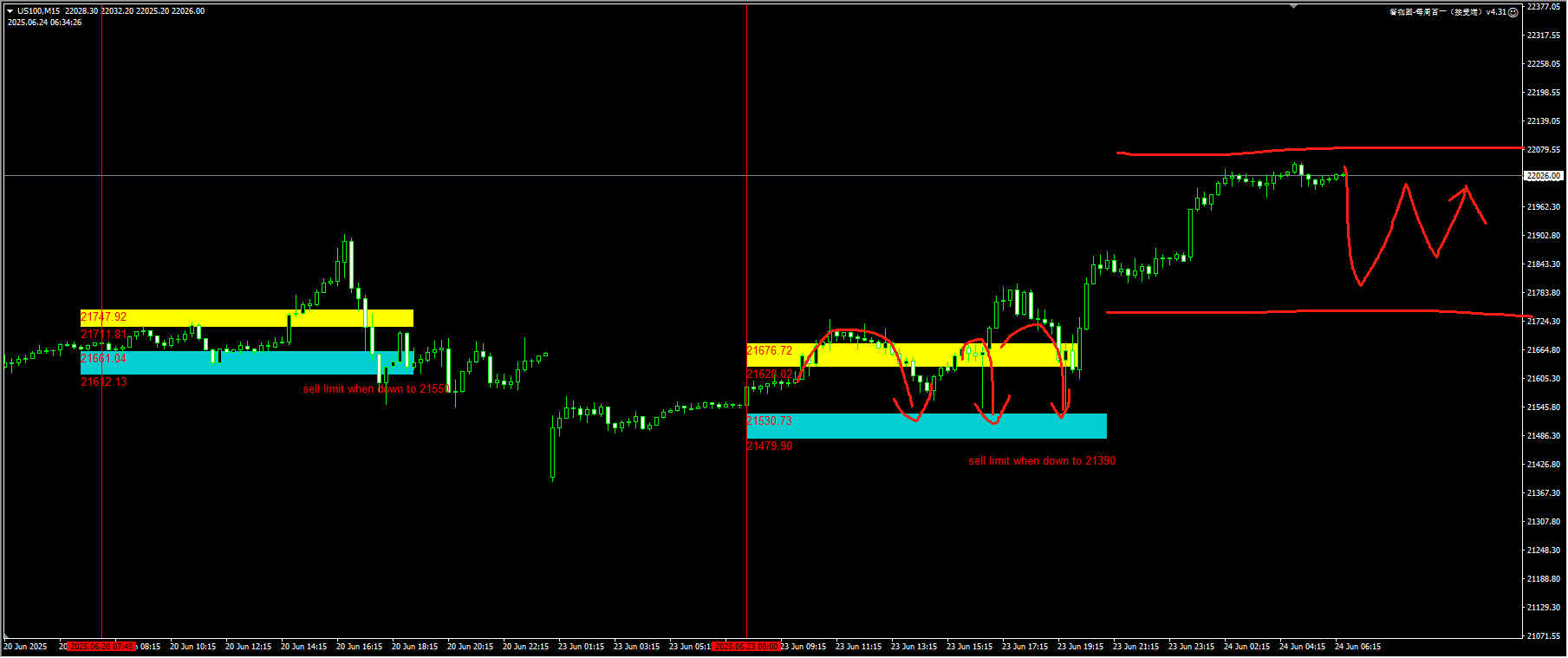Oil prices continued to fall as US President Donald Trump announced a temporary ceasefire between Iran and Israel.
Brent crude futures plunged nearly 5% in early trading to $68 a barrel before paring some losses. The oil price had experienced a roller-coaster decline on Monday, ending with a sharp drop. The slump briefly pushed the price below the level seen on June 12, the day before Israel’s attack on Iran. Gold prices fell as safe-haven demand weakened.
According to a post on Truth Social, Trump said that Israel and Iran have agreed to a “full ceasefire” that will begin around midnight New York time, which will reduce the risk premium of crude oil. In addition, Iranian Foreign Minister Abbas Araqchi said that Iran will cease fire if Israel stops attacking.
The Middle East crisis has roiled the oil market, with concerns that the conflict could disrupt supplies from the region, which accounts for about one-third of global crude oil production. As the stalemate unfolded, oil prices soared at one point but then gave back some of the gains. Neither Israel, Iran nor the United States has attacked oil-related infrastructure, and ships have only been slightly impeded, continuing to pass through the Strait of Hormuz.
Chris Weston, the head of institutional research, said: “Traders are now convinced that the risk of supply shocks has passed. The prospect of the US being embroiled in a long-term conflict has been repriced, which has given the green light to increase risk exposure and cut tail-risk hedges.”
Signs that tensions have eased are that the Brent crude prompt spread (the difference between the two nearest contracts) narrowed to an 84-cent-per-barrel premium for the front month. Although this remains a bullish pattern, with near-term prices higher than those in the future, it is down from last week’s closing high of $1.77 per barrel.
This crisis broke out at the beginning of this month. Israel attacked Iran, attempting to destroy its nuclear program, decapitate its leadership, and weaken its military power. In response, Iran retaliated with missiles. Subsequently, the situation escalated further. Trump ordered strikes on Iran’s nuclear facilities. Iran’s counterattack was to launch a small number of missiles at the US air base in Qatar.
A temporary ceasefire agreement in the Middle East – if it takes effect and holds – could refocus traders’ attention on the fundamentals of the crude oil market. The market widely expects that oil supply will exceed demand in the second half of this year, thereby stimulating a global inventory increase.
After Trump announced the ceasefire, Vice President JD Vance told Fox News in an interview that the US bombing over the weekend had achieved its goal. “We know they can’t make nuclear weapons,” Vance said. Reuters reported, citing an unnamed senior official, that Iran had agreed to the ceasefire.
The decline in oil prices may help ease global inflationary pressure, alleviate the challenges faced by central bank officials, and potentially enhance the feasibility of interest rate cuts. Recently, Federal Reserve Governor Christopher Waller and Vice Chair for Supervision Michelle Bowman stated that if inflation remains under control, they might support a rate cut in July.
Robert Renney, head of commodities and carbon research at Westpac, said: “In a week and a half, OPEC+ will agree to increase production by another 400,000 barrels per day. As we enter the third quarter, with global output rising and demand falling, inventories will increase significantly, and we will see oil prices bottom out at the lower end of the previous $60 to $65 range.”
Technical analysis:
Gold: Our plugin’s blue and yellow zones from yesterday functioned perfectly. The first wave of pullback completed its consolidation near the blue zone and rose to around 3395. Then, after the yellow zone was cleared of liquidity, the rebound began and is still in effect. We suggest holding onto the long positions that came from the yellow zone overnight, but with appropriate protection measures. For today, we’ll wait for the recovery above 3350/60 before attempting new long positions. For detailed positions, please consult the plugin.

The plugin is updated from 12:00 to 13:00 every trading day. If you want to experience the same plugin as shown in the picture, please contact V: Hana-fgfg and note “666” in the message.
The Nasdaq: The overnight price dropped in the area we warned about the yellow sweep of liquidity, achieving 2-3 times the profit-to-loss ratio of more than 2. Although, in the end, due to Trump’s announcement of a ceasefire, the price returned above 22,000. However, for the day, we should continue to focus on buying low and short selling after the liquidity sweep at high levels. For detailed positions, please consult the plugin.

(NASDAQ 15-minute chart)
The plugin is updated from 12:00 to 13:00 every trading day. If you want to experience the same plugin as shown in the chart, please contact V: Hana-fgfg and note “666” in the message.
Crude oil: Yesterday, crude oil made a bullish attempt at the yellow low-sweep liquidity level, which had some effect. However, after Trump’s ceasefire remarks, the price dropped all the way to the 66/65 area. Today, we observe 68.50/69 as the key support and resistance level. If the price fails to recover this area, we will not consider the bullish signal. For detailed positions, please consult the plugin.

(Crude Oil 15-Minute Chart)
The plugin is updated from 12:00 to 13:00 every trading day. If you want to experience the same plugin as shown in the picture, please contact V: Hana-fgfg and note “666” in the message.
Today’s key economic data and events to focus on:
16:00 Germany June IFO Business Climate Index
18:00 UK June CBI Industrial Order Expectations Index Diff.
20:30 Canadian Core Consumer Price Index for May
22:00 US Conference Board Consumer Confidence Index for June
21:15 Cleveland Fed President Loretta Mester will speak on monetary policy.
At 22:00, Federal Reserve Chair Powell will deliver his semi-annual monetary policy report testimony before the House Financial Services Committee.
